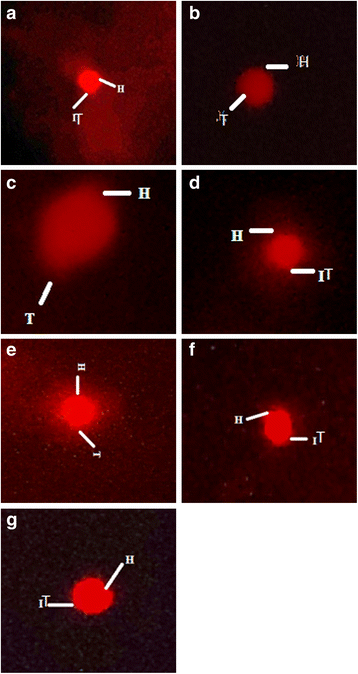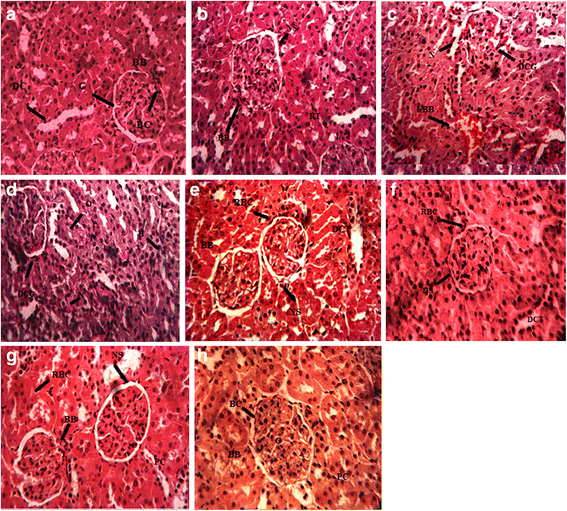Proficiencies of Artemisia scoparia against CCl4 induced DNA damages and renal toxicity in rat
- PMID: 27233360
- PMCID: PMC4884399
- DOI: 10.1186/s12906-016-1137-6
Proficiencies of Artemisia scoparia against CCl4 induced DNA damages and renal toxicity in rat
Abstract
Background: Artemisia scoparia is traditionally used in the local system of medicine in kidney disorders. This study aimed at scrutinizing the nephroprotective prospective of A. scoparia methanol extract against carbon tetrachloride (CCl4) provoked DNA damages and oxidative stress in kidneys of rat.
Methods: Dried aerial parts of A. scoparia were powdered and extracted with methanol to obtain the viscous material (ASM). Sprague Dawley male rats (42) were grouped (7) having 6 rats in each. Group I remained untreated and Group II treated intraperitoneally (i.p) with DMSO + olive oil (1 ml/kg body weight (bw). Rats of Group III - VI were treated with CCl4 (1 ml/kg bw; i.p 30 % v/v in olive oil). Animals of Group IV were co-administered with 100 mg/kg bw of silymarin whereas rats of Group V and VI with 150 mg/kg bw and 300 mg/kg bw of ASM at an interval of 48 h for four weeks. Animals of Group VII were administered with ASM (300 mg/kg bw) alone. DNA damages were investigated with comet assay in renal tissues while the oxidative injuries were estimated in serum and renal tissues.
Results: Co-administration of ASM to rats significantly reduced the DNA damages at 300 mg/kg dose as indicated in comet length (40.80 ± 2.60 μm), head length (34.70 ± 2.21 μm), tail length (7.43 ± 1.24 μm) and DNA content in head (88.03 ± 2.27 %) to that of CCl4 for comet length (63.16 ± 2.11 μm), head length (23.29 ± 1.50 μm), tail length (39.21 ± 2.81 μm) and DNA content of head (74.81 ± 2.18 %) in renal cell's nuclei. Increased level of urea, creatinine, bilirubin, blood urea nitrogen whereas decreased concentration of proteins in serum of CCl4 treated animals were restored towards the normal level with co-administration of ASM. CCl4 injection in rats decreased the activity level of CAT, POD, SOD, GST and γ-GT and GSH contents while elevated levels of TBARS, H2O2 and nitrite contents were observed in renal tissues. A noteworthy retrieval of all these parameters and the altered histopathological observations was notified near to the normal values after treatment with both the doses of ASM.
Conclusion: Results obtained suggested the therapeutic role of ASM in oxidative stress related disorder of kidneys.
Keywords: Antioxidant; Artemisia scoparia; Comet assay; DNA damages; Kidneys; Lipid peroxidation.
Figures


References
-
- Hayat MQ, Khan MA, Ashraf M, Jabeen S. Ethnobotany of the genus Artemisia L. (Asteraceae) in Pakistan. Ethnobot Res Applicat. 2009;7:147–62. doi: 10.17348/era.7.0.147-162. - DOI
-
- Yeung H-C. Handbook of Chinese Herbs and Formulas. Los Angles: Institute of Chinese Medicine; 1985.
MeSH terms
Substances
LinkOut - more resources
Full Text Sources
Other Literature Sources
Research Materials
Miscellaneous

